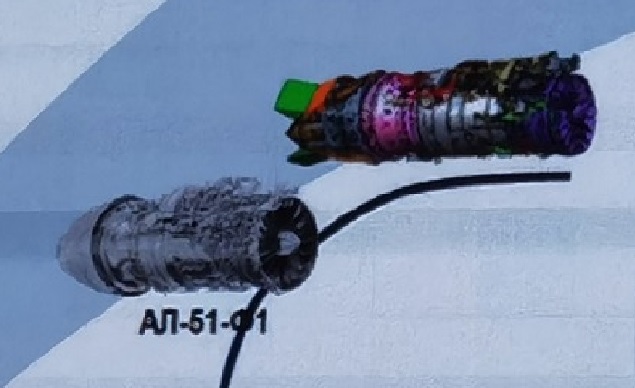Going F-22: Russian Su-57 Fighter Engine Receives Official Designation, 2D Vector Thrust Development Advances
The fifth-generation fighter engine program, aimed at powering Russian Sukhoi Su-57 Felon stealth fighters and previously known as «Izdeliye 30,» has received the new designation AL-51-F1, indicating readiness for mass production.
Financial and technical difficulties delayed the development of the advanced engine intended for Russian fifth-generation Su-57 fighters, leading to the initial delivery with AL-41F1 engines, an enhanced version of those powering Su-35S fighters.
Possible designation «AL-51-F1» for the Izdeliye 30 engine. Future three-circuit engine, and sixth-generation engine. Source: Paralay Forums ????#Saturn #Russia@qweqwellkk @ale_ducat @DFI_Sancho @Zdialashknashia pic.twitter.com/zMgxfVaUyj
— Willy Dequid (@WDequid) July 6, 2023
Previously known as Izdeliye 30 (Item 30), this fifth-generation engine, according to the manufacturer, has a compression ratio of 6.7, an air consumption of 21-23 kg/s, and a full afterburner thrust around 17-19 tons. It provides significantly more thrust than the almost 15 tons of thrust of the «first-stage» AL-41F1 engine used by the initial Su-57 series. It also features thrust vectoring (TVC), 3D-printed parts, ceramic matrix composites, fully digitized engine control (FADEC), and sharpened gas output to reduce its thermal and radar signature.
Development Completed
According to a recent interview with Vladimir Artyakov, First Deputy CEO of Rostec, although the current engine meets the basic requirements for a fifth-generation aircraft, the next batch of Su-57 fighters (enhanced and upgraded) contracted by the Russian Ministry of Defense, will feature the final engine. The aircraft with the second-stage engine are now undergoing flight tests.

Rectangular 2D Nozzles
Beyond the new designation indicating that the fifth-generation fighter engine (to be used by both the Su-57 and Su-75) is finished and close to starting mass production, images also show Russia developing its rectangular thrust vectoring nozzle design, analogous to those used by the American F-22 Raptor. This nozzle design reduces the radar cross-section of a combat aircraft significantly and, according to experts, would be lighter than a 3D thrust vectoring nozzle, as used by Russia’s advanced fighters currently.

The Sixth-Generation Engine
Finally, it’s worth noting that UEC is working on sixth-generation fighter engines, a completely new design, not an evolution of the AL-51-F1.

As seen in the presentation, the future propulsion group would incorporate high-performance materials like advanced ceramics, sophisticated electrical systems, and a novel three-airflow architecture (also known as adaptive cycle engines), greatly enhancing fuel efficiency in different flight regimes while increasing heat dissipation capacity, essential for employing the next generation of electronic warfare systems and laser weaponry being developed for sixth-generation fighters.

/https://aviacionlinecdn.eleco.com.ar/media/2020/08/Su-57-UAC-2.jpg)
Para comentar, debés estar registradoPor favor, iniciá sesión